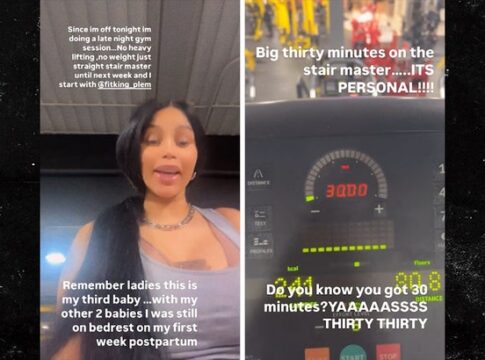There was no shortage of head-scratching moments in Donald Trump’s debate performance last week, but some of the biggest humdingers involved abortion. The former president repeated false claims that some blue and purple states permit abortion after birth. Trump also absurdly argued that all Americans and legal scholars wanted Roe to be overturned.
It isn’t news that Trump indulges in more than the occasional alternative fact, but these lies didn’t have a superficial air of plausibility. Conservative groups like the Family Research Council cite state data suggesting that a handful of babies are born alive after abortion. It’s hard to know what to make of these data, which sometimes include any sign of life, such as umbilical cord pulsation, and don’t obviously differentiate miscarriage, stillbirth, and abortion. Besides, killing any infant after birth qualifies as homicide—the United States punishes the killing of newborns especially harshly compared to peer nations—and the federal Born-Alive Infants Protection Act defines infants born alive after abortion as rights-holding persons under federal law.
Trump’s other statement was just as implausible. Polls show that most Americans opposed the reversal of Roe, with the 2022 Dobbs decision remaining unpopular. Further, a significant number of scholars submitted briefs to the Supreme Court asking the justices not to reverse Roe.
The abortion issue is an obvious liability for Trump. Why would he persist in saying things so patently false that they are almost sure not to move the needle?
We can chalk part of this strategy up to Trump’s proclivity for wish-casting, but there’s something more nuanced going on: Trump is pushing the line that the GOP ticket represents the mainstream while Democrats have veered to the extreme, one of the oldest tactics in the anti-abortion-rights playbook.
Trump has adopted this strategy because it’s well tested: Abortion opponents have successfully used it for years. In the 1990s, anti-abortion activists got a leaked copy of a paper that was presented at the annual conference of the National Abortion Federation describing a procedure called dilation and extraction. Anti-abortion opponents made the fight against what they labeled partial-birth abortion the centerpiece of their struggle during the 1990s and early 2000s. Given that anti-abortion-rights groups sought to minimize access to the procedure, prioritizing such a ban seemed strange given that it would not stop anyone from terminating a pregnancy. The point, however, was to stigmatize all abortions—and to paint Democrats who supported such a law as extremists. The movement drew on this strategy again in promoting the Born-Alive Act, which mostly served to put Democrats on the defensive. This plan worked so well that Republicans promoted yet another born-alive act in and beyond the 2010s, arguing the one that they already passed wasn’t good enough.
Last week’s debate powerfully illustrates how this argument just doesn’t land for Republicans the way it used to. That’s for two reasons. First, as states enact increasingly stringent laws, labeling Democrats as extreme invites questions that Trump isn’t willing to answer about what kinds of restrictions he thinks are extreme. When asked whether he would veto an abortion ban, Trump has equivocated or refused to answer the question (as he did during the debate). He’s been similarly evasive about whether he would use the Comstock Act, a 19th-century obscenity law, as an abortion ban, as J.D. Vance once demanded, and as Project 2025 outlines. Reports stressed that Trump said he wouldn’t use the Comstock Act in this way without acknowledging how much he hedged, stating that he “generally” wouldn’t use Comstock, and had yet to work out the specifics. (You could say he has “concepts of a plan.”) Calling Democrats extreme doesn’t work when Trump’s GOP is closely aligned with a movement that endorses bans and a vision of fetal personhood that are so out of step with popular opinion.
Second, the more voters support abortion rights, the more Trump’s effort to claim the middle ground requires him to lie about what Americans think, or about how abortion in America actually works, in ways that don’t jive with many people’s lived experience. Before Roe was overturned, legal commentators often compared abortion to same-sex marriage, puzzling over why tolerance for the latter seemed to have grown exponentially while the percentage of Americans who supported abortion remained relatively steady.
Part of the answer, it seems, is that many Americans didn’t know that they knew someone who’d had an abortion, and thus had an easier time opposing the procedure later in pregnancy as unnecessary and inhumane, or imagining that doctors who performed abortions were uncaring “abortionists.”
Dobbs in some ways brought abortion into the open. Patients who were denied abortions have filed lawsuits without pseudonyms, talked to the media, and even taken center stage at the Democratic National Convention. The more Americans have a sense of how abortions in America work—especially late in pregnancy—the harder Trump’s tales of extremism are to swallow. And public opinion itself has shifted in the aftermath of Dobbs, with a record high number of Americans supporting abortion rights. Telling Americans that liberals and conservatives always wanted Roe gone is especially tone-deaf when more of them than ever wish it were still the law.
Trump’s likely to repeat these talking points on the campaign trail, but they won’t play any better with most voters. Trump’s real hope is that voters simply don’t care that much about reproductive rights—or at least not by significant enough margins to block his chances in the Electoral College.
When Joe Biden was at the top of the Democratic ticket, Trump had managed to avoid real damage when it came to abortion. Last week’s debate shows how much has changed now that Kamala Harris can press him on what he actually means. The debate is just the latest reminder of how Trump’s usual conspiracy-mongering works less well when it comes to abortion—and how simply dusting off the old playbook doesn’t look like it will be enough for the anti-abortion movement anymore.




